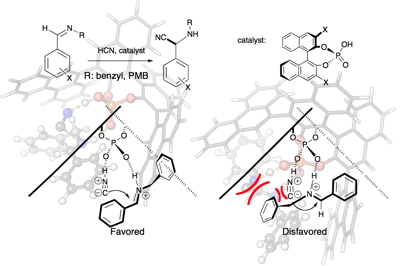
Professor in Chemistry
We use chemical informatics, computational chemistry, machine learning and AI to investigate molecules and to discover more about their structure, reactivity, analytical data and properties.

(Full list of publications)
Professor Goodman discusses his research
Publications
Understanding the competing reactions of polyurethane foam formation: A computational study
ABSTRACTS OF PAPERS OF THE AMERICAN CHEMICAL SOCIETY
(2012)
243
RInChIs and reactions
ABSTRACTS OF PAPERS OF THE AMERICAN CHEMICAL SOCIETY
(2011)
242
Combining calculations and experiments in the analysis of NMR spectra: CP3, DP4 and beyond
ABSTRACTS OF PAPERS OF THE AMERICAN CHEMICAL SOCIETY
(2011)
242
Structure-activity studies of the pelorusides: New congeners and semi-synthetic analogues
Org Biomol Chem
(2011)
9
4456
(doi: 10.1039/c0ob01127d)
A Model for the Enantioselectivity of Imine Reactions Catalyzed by BINOL-Phosphoric Acid Catalysts
J Org Chem
(2011)
76
1775
(doi: 10.1021/jo102410r)
Self-assembly of trehalose molecules on a lysozyme surface: the broken glass hypothesis.
Physical Chemistry Chemical Physics
(2010)
13
2294
(doi: 10.1039/c0cp01705a)
How reliable are DFT transition structures? Comparison of GGA, hybrid-meta-GGA and meta-GGA functionals
Organic and Biomolecular Chemistry
(2010)
9
689
(doi: 10.1039/c0ob00477d)
Proline-catalyzed aldol reactions of cyclic diketones: fluorine modifies pathways as well as transition states
Tetrahedron
(2010)
66
8021
(doi: 10.1016/j.tet.2010.08.003)
Assigning stereochemistry to single diastereoisomers by GIAO NMR calculation: the DP4 probability.
J Am Chem Soc
(2010)
132
{12946-12959}
(doi: 10.1021/ja105035r)
ChemInform Abstract: The Rational Design of Highly Stereoselective Boron Enolates Using Transition‐State Computer Modeling: A Novel, Asymmetric Anti Aldol Reaction for Ketones.
ChemInform
(2010)
24
no
(doi: 10.1002/chin.199302068)
- ‹ previous
- Page 14

